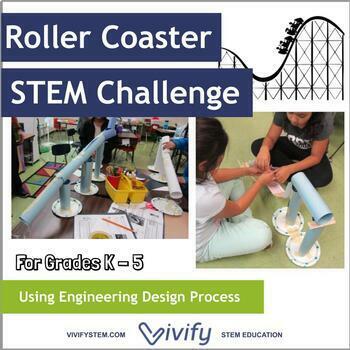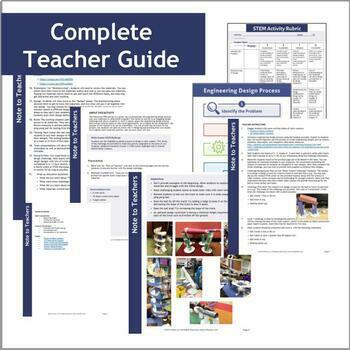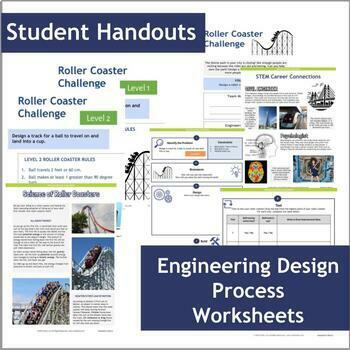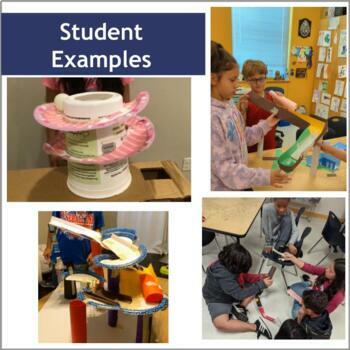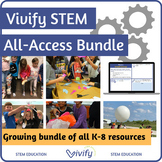Roller Coaster STEM Challenge Engineering Design (Grades K-5)
- PDF
What educators are saying
Also included in
- Are you in need of year-round STEM activities? This growing bundle includes our most popular STEM lessons and engineering design challenges for elementary! Activities are adaptable for 1st through 5th grade with guidance provided in the teacher notes. Need help with a STEM Curriculum Map? Grab our FPrice $410.72Original Price $513.40Save $102.68
- Are you in need of year-round STEM activities? This growing bundle includes ALL Vivify K-12 STEM lessons from team challenges, engineering design, semester-long STEM units, research projects, and more! Purchase everything for 20% off individual products! Here is a sample of what is included: Stage 1Price $990.24Original Price $1237.80Save $247.56
Description
Roller Coaster STEM Challenge
Who doesn't love roller coasters? Using the Engineering Design Process, student teams are tasked with designing a thrilling roller coaster ride! Students learn about the science of roller coasters including various forms of energy, and then using common materials such as craft sticks, paper, and tape, students need to design a track for a ping pong ball to land safely in a cup at the bottom. The student packet also includes STEM career highlights of civil engineering and psychology to bring a real-world STEM connection.
Our students loved this activity! While intended to be completed in a one-hour session, the high engagement from students turned the roller coaster STEM challenge into a multi-day project and part of an end-of-year showcase for parents.
As with many STEM activities that are student-driven, this challenge can be tailored to students of various skill levels and abilities.
Included in this product:
- Detailed teacher guide with links to resources
- Instructional video - great for distance learning or support in the classroom!
- Teacher instructional slides
- Editable student handouts: digital and printed versions
- STEM Career Connections
- Real-world STEM history and science handouts
Materials for Challenge:
- Scissors
- Tape
- Ping pong ball for testing
- Materials for a track such as paper, newspaper, construction paper, cardboard (cereal boxes, tissues boxes, etc), paper plates, and toilet paper rolls.
- Materials for a support structure such as cereal boxes, rolled paper (newspaper, construction paper, magazines), or even a chair will work
Looking for more STEM lessons? Our team of engineers and educators is dedicated to developing low-prep and high-quality STEM activities for any classroom! Click below to learn more:
- Vivify's Scope & Sequence + Standards Alignment
- Vivify's Resource Guide
- Learn about the 3 Stages of STEM
- Vivify STEM Membership
Customer Tips:
• Click the Green ★ to follow our store and get notifications of new products and freebies
• Leave feedback to receive TpT credit for use on future purchases
• Questions? Contact us in the Product Q&A section
♥ Connect With Us ♥
Email us: info@vivifystem.com

